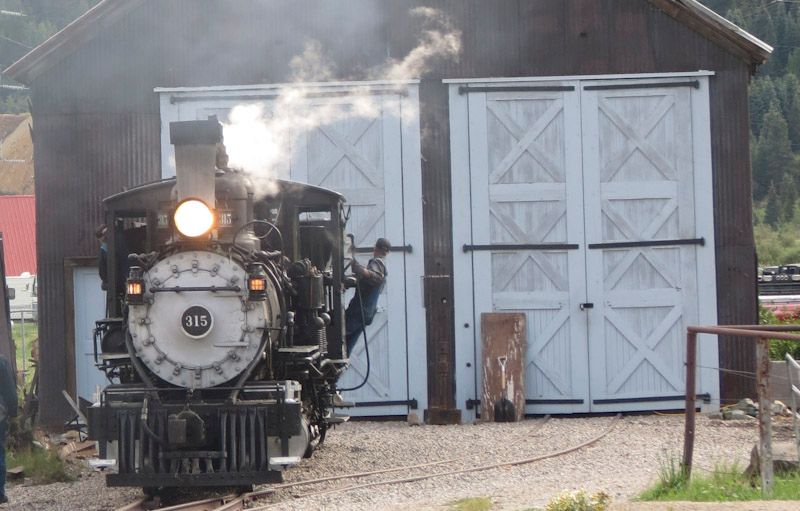I will be building an engine shed to store some trains on the layout. Which version of doors do think looks best?

I will be building an engine shed to store some trains on the layout. Which version of doors do think looks best?

D looks the best to me… 
I got dizzy looking at the choices. ![]() I liked B and F the best.
I liked B and F the best.
Steve, so did I… Had to look at them for a while, before I could see the difference between A & E, C & D or B & F…
Difference is how the ends of the boards are cut… One is cut like / and the other cut like a < …
Definitely “C”
‘C’ is the most asthetically pleasing but to be correct the diagonal braces on the second panel should run the same as the diagonals on the lower panel keeping them in compression. Just my 2 cents worth.
Ron
I like F
I like D
Isn’t there a prototype to compare against? How about the EBT Mt. Union, Pa. engine house?
First rule of multiple guess; It’s always C. But I like the end board cut of D better
Thanks guys,
I am leaning towards D but it has the most miter cuts.
Dennis
Well to go along with the unanimous decision, I like them all also 
I would think that the scab bracing amount and placement would have a lot
to do with the size and weight of the doors when hung.
The larger and heavier the door the more bracing required.
Just a thought.
Rick
Andy Clarke said:
Steve, so did I… Had to look at them for a while, before I could see the difference between A & E, C & D or B & F…
Difference is how the ends of the boards are cut… One is cut like / and the other cut like a < …
I saw that, but in the choices of B & F, the difference is so slight as to not make much difference using the 10 ft rule. ![]()
Rick Marty said:
Well to go along with the unanimous decision, I like them all also
I would think that the scab bracing amount and placement would have a lot
to do with the size and weight of the doors when hung.
The larger and heavier the door the more bracing required.
Just a thought.
Rick
These doors will be fake so I guess I can get away with little or no bracing. 
Dennis
I don’t like any of em’
I kinda like “D”.
Dennis,
Not to be a party crasher, but a little structural commentary. Options A and E are almost identical except for the detail of the mitering. On these doors the diagonals should be in the opposite direction. The bottom of the diagonal should be located on the firmest part of the door (where the hinge meets the frame) and the top of the diagonal should be at the point you need the most support. Always keep in mind when designing wooden structures that wood is strongest in compression, steel is strongest in tension. Look and any wood truss bridge and you will see the rods are the members in tension and the diagonal are in compression.
Ditto for options B and F. Options C and D are the most feasible structurally, although from a fabrication/asthetic perspective are the least appealing (my opinion only).
I am working on a set of drawings for a three stall engine house using doors of the A/E style.
Any one once the structure is corrected are viable options and no doubt an example of any of them could probably be located.
Good looking project (from what I can see).
Bob C.
Here is a pic of the Silverton Northerns engine house doors, Re-made to the exact specs of the original.

There is iron bar stock for the hinges.
Oh BTW 315 look good too.
The top illustrations are all incorrect as far as structural carpentry goes.
The verticals should go all the way from top to bottom. The horizontals should be in between.
The diagonals should go down to the hinged side so they are load bearing.
It’s not about aesthetic choice, it’s about preventing the weight of the door from sagging and eventual failure of the joinery.
The long hinges stop the door from spreading to keep all joinery tight.
Usually doors are lined on the outside to keep weather out of the timber joins but then the hinges would be over the top of the lining instead of on the door’s structural frame.
The added two piece diagonals going the other way as in Dave’s picture are mainly for security, lining and aesthetic reasons. They offer no extra support.
Andrew
C or D. There is such a small difference between the two that it would never be noticeable standing alone.